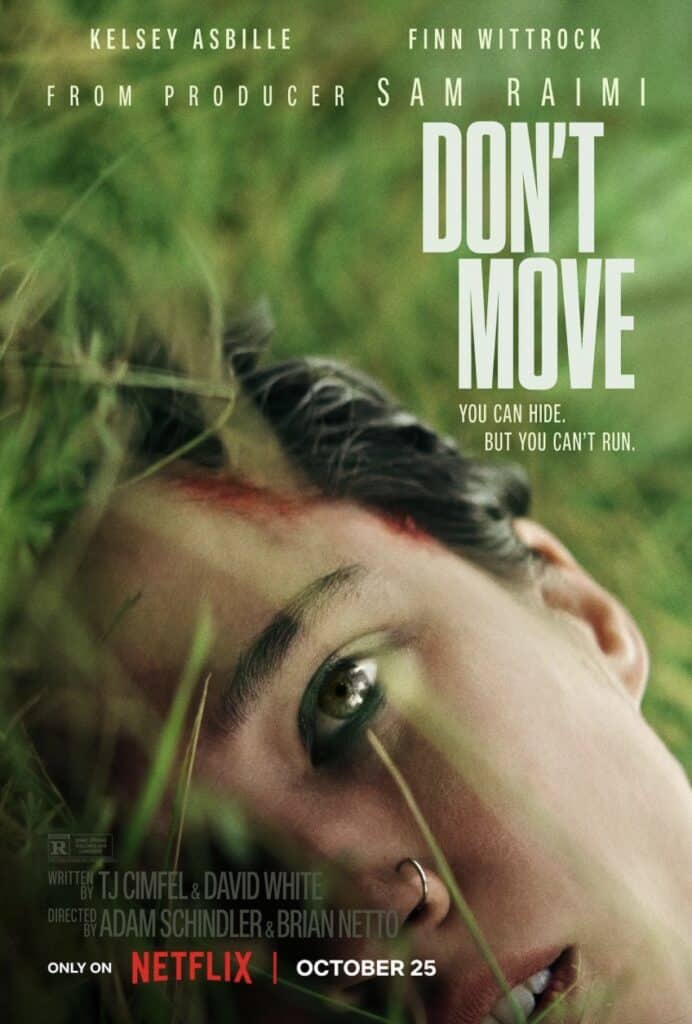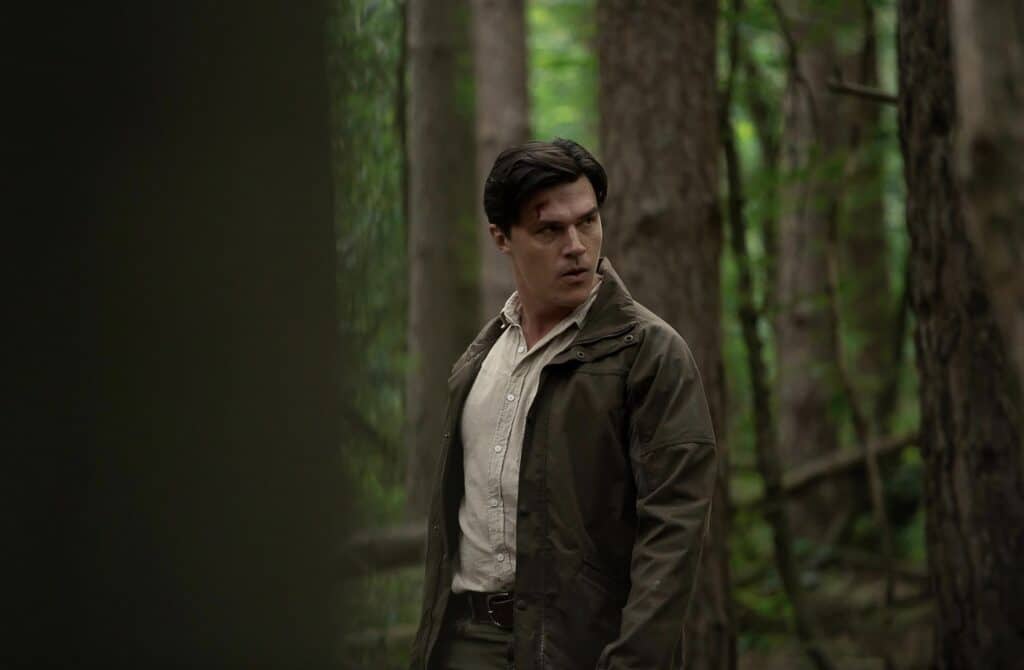

Don’t Move brings a harrowing and inventive twist to survival horror, delivered by producer Sam Raimi and starring Kelsey Asbille and Finn Wittrock. The film transforms the vast landscapes of dense forests and looming mountains into settings that paradoxically feel both expansive and inescapably claustrophobic. The premise is deceptively simple but highly effective: a grief-stricken woman, played by Asbille, meets a seemingly compassionate stranger (Wittrock), who soon reveals his darker intentions by injecting her with a paralytic drug. What ensues is a high-stakes game of survival as her body betrays her with each passing moment, ratcheting up the film’s unyielding tension.
Wittrock shines as Richard, a serial killer whose surface-level charm masks his sinister intentions. He brings a compelling duality to his role, veering between a gentlemanly facade and an unsettling darkness, channeling the unnerving energy of his previous roles in American Horror Story. Opposite him, Asbille has the daunting task of conveying terror and resolve with limited mobility, using minute expressions and subtle gestures to communicate a relentless fight for survival. Her character, Iris, battles not just a physical paralysis but the emotional scars of past trauma, adding layers to her struggle and casting her survival as both a physical and psychological journey.
The film’s direction, by the duo Adam Schindler and Brian Netto, capitalizes on visual and atmospheric contrasts, juxtaposing nature’s openness with Iris’s growing sense of entrapment. Each scene builds on the dread of the last, maintaining a claustrophobic intensity that rarely wanes. Don’t Move also presents a unique thematic layer by rendering Iris incapable of the typical “final girl” maneuvers—here, her resourcefulness is constrained by her body’s betrayal, heightening the tension. Moments of her regaining limited control offer temporary relief, only for the danger to re-intensify, which propels the narrative forward with heart-pounding urgency.

Though Don’t Move is admirably lean, with a brisk 92-minute runtime, the film’s simplicity is both a strength and a minor drawback. While it tightens the focus on the protagonist’s terrifying predicament, some might feel that the singular setup limits the story’s overall depth. Certain scenes, particularly interactions with other characters, can feel drawn out, and the Bulgarian filming locations posing as American wilderness occasionally break immersion. Yet, for fans of suspense-driven horror, these are minor flaws that hardly detract from the film’s chilling impact.
Sound design in Don’t Move plays a vital role in heightening suspense, emphasizing the growing sense of isolation in the wilderness. Ambient sounds like distant birds, rustling leaves, and snapping twigs ground the viewer in Iris’s surroundings, while more invasive noises—her labored breathing, Richard’s quiet steps—highlight the imminent threat. As Iris’s motor functions gradually fail, sound becomes her primary sensory experience, and we hear her body’s weakening responses alongside her mounting fear. The score interweaves with these natural sounds, building in intensity as her movements become more restricted. Moments of silence are equally impactful, with sudden quietness punctuating key scenes and making the presence of danger feel even closer. This layered soundscape envelops the viewer, making Iris’s fear palpable and ensuring the tension remains unbroken from start to finish.

With Raimi’s touch apparent in its pacing and dark humor, Don’t Move is a satisfying addition to Netflix’s horror lineup. Its cat-and-mouse narrative doesn’t just invite viewers into Iris’s plight; it forces them into her perspective, making every fleeting ounce of regained control feel monumental. While the premise may feel one-note to some, Don’t Move proves that survival horror, when done right, can keep viewers transfixed—without needing them to do much moving at all.

4/5 Stars






